How to Boost Pistol Skills Right Now, for FREE
 Bryan Hill / January 20 2024
Bryan Hill / January 20 2024
The best shooters in the world all have a secret:
Below, we'll cover how to get you started with dry practice at home,
so you can build your skills with minimal or no cost.
On This Page:
- Preparing for Dry Practice
- Before You Start a Session
- Top Dryfire Drills
- Beyond the Basics
- Wrapping up
Preparing for Dry Practice
You'll need the following:
Keep live ammo out of your practice room if at all possible.
In that room, face a side with a safe backstop,
to reduce the risk if you have a negligent discharge.
Only place targets on that side of the room.
What targets to use? Try our free printable targets.
They're small, 1/3 the size of normal targets.
Why? You may be dry firing in a small room, and small targets simulate distance.
Let's say you want to practice on a 6" circle, so you use a 2" circle instead.
When your target is 1/3 the size of your actual target, multiply the distance from your target by 3.
Each foot of distance from a 2" circle is like a yard of distance from a 6" circle.
Instead of needing 10 yds. of distance with a 6" target, you only need 10 ft with a 2" target.
These target sizes translate well to competition, and practical accuracy for self-defense shooting.
If you have a hard time at first, get closer to the target. Resist the temptation to use bigger targets.
Before You Start a Session
-
Review the 4 rules of gun safety.
-
Safely unload your pistol.
-
Pick 3-5 drills. Which drills? Read on.
Top Dryfire Drills
If you master these foundational skills, you'll be way ahead of most shooters.
Do 3-5 sets of 10 per dry fire session.
Start out untimed, but when you get the hang of the movements,
start timing yourself on our free Dry Fire App:
-
If you pass 10/10 reps, reduce Par Time by 0.1.
-
If you pass at least 7/10 reps, keep practicing 'till you get 10/10.
-
If you pass less than 7/10 reps, increase Par Time by 0.1.
Dry Trigger
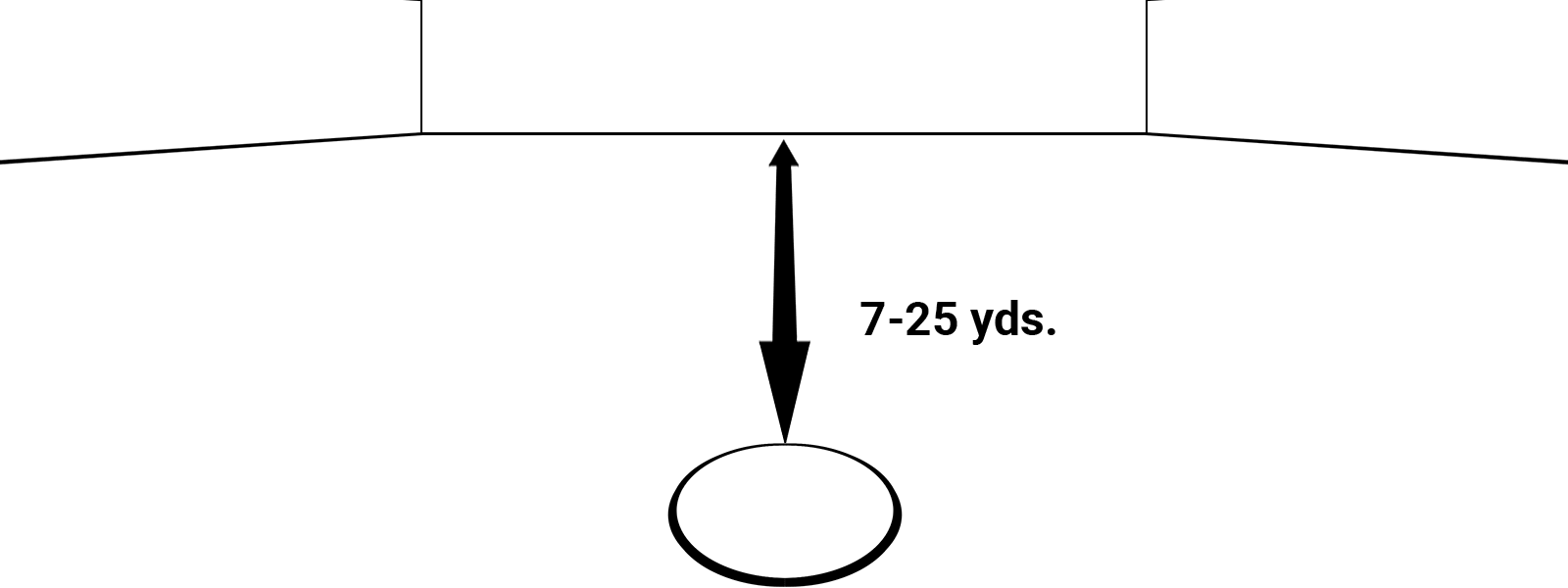
-
Unload your pistol.
-
Start out with a blank wall (with a safe backstop), so you can focus on your sight alignment.
-
Aim your pistol at the wall. Your finger may be on the trigger, but may not apply any pressure yet.
-
Press the trigger until it breaks (the gun goes click).
-
As you press the trigger, note any movement in the sights.
-
Rack the slide and take aim for the next rep.
-
A "Pass" is breaking the trigger with no movement in the sights.
Do it untimed until you master the trigger press with no time limit.
Then, in our Dry Fire App, select "Dry Trigger", and "Untrained" difficulty. Work your way up to higher difficulties.
Variations
-
Alternate freestyle shooting and single-hand shooting.
-
Try different pistols with different triggers.
-
Start with trigger finger safe (on slide)
Technique Hints
How to Perfect Your Pistol Trigger Press [for Free]
Ultimate Goal
Get a dry trigger press with sights on-target at (simulated) 7 yds. in 0.20 or less.
Target Transitions
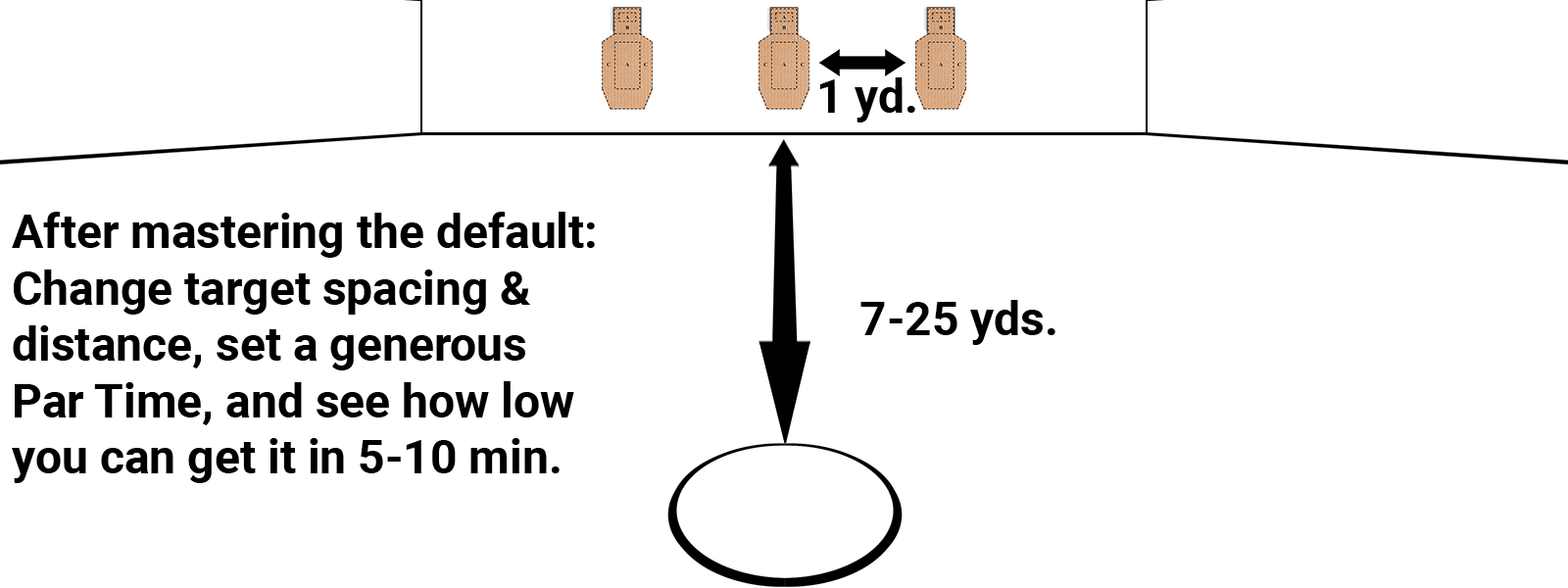
-
Unload your pistol.
-
Set two targets target 7 yards away, 1 yard apart.
-
Take aim on one target. Then, transition to the other target and get a good sight picture before the second beep.
You don't have to press the trigger for this drill.
When you start to feel comfortable with this drill, switch things up.
Technique Hints
Lead with your eyes. Look exactly where you want to hit, then let the gun follow.
Move precisely while keeping your arms and shoulders relaxed.
It's like using a mouse pointer.
Tensing up is fast at first, but takes more time to aim once you have the gun on target.
This applies in dry practice. Here are examples from Ben Stoeger, multi-time USPSA national champion and IPSC world champion:
And in live fire:
It still applies with a red dot:
Draw
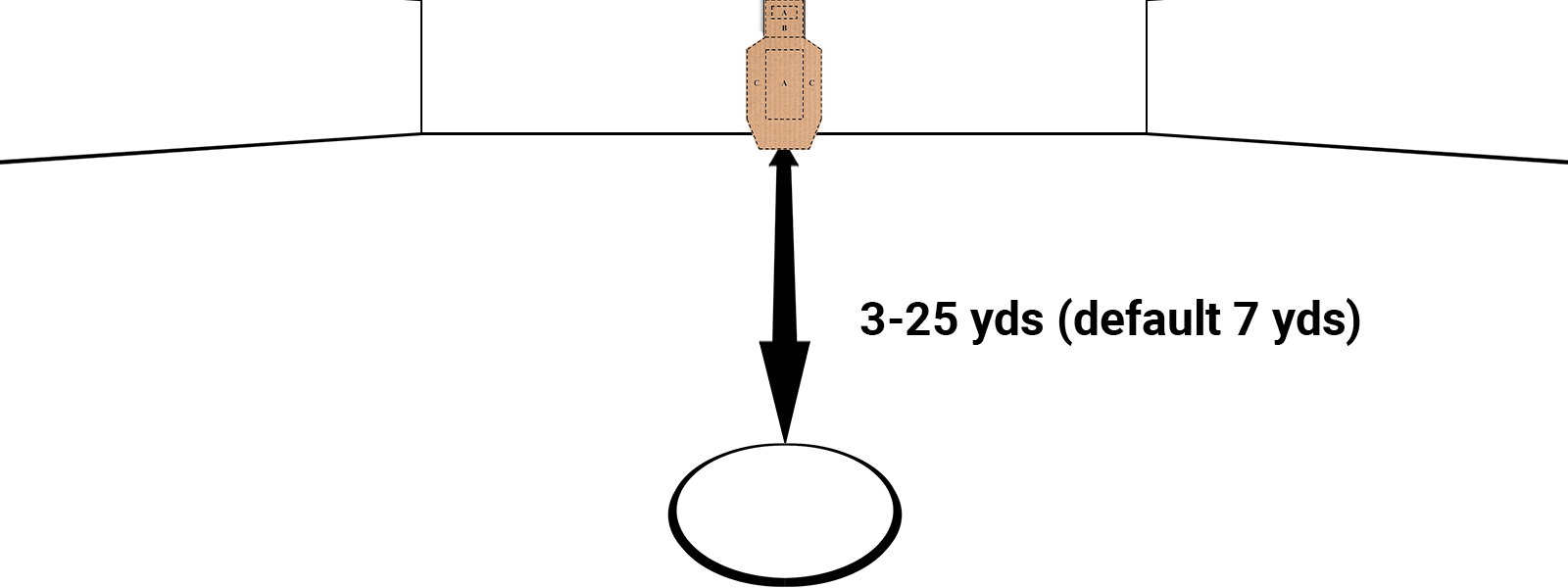
-
Unload your pistol.
-
Equip your belt and holster.
-
Start with hands at your sides.
-
At the beep, draw your pistol and get a sight picture with a good grip before the second beep.
You don't have to press the trigger for this drill.
Technique Hints
See the technique hints in the micro-drills for the draw in the Free Dry Fire App.
Variations
The draw is a complex technique, so break it down into parts.
See the Free Dry Fire App for micro-versions of this drill,
plus toggles (180º Turn, etc.).
Ultimate goal
Get a full draw of 1 sec or less, and a draw (Step 2 to Step 3) in 0.40 sec or less.
Beyond the Basics
If you get stuck or get bored of the basic dry fire drills, these resources will help you level up.
Lasers for Dryfire
Laser Cartridge
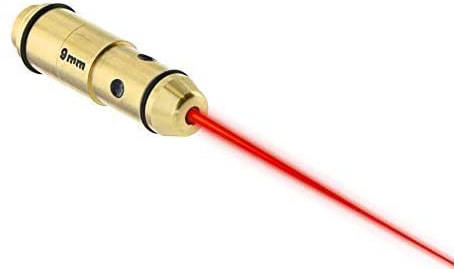
A laser cartridge like the Laserlyte LT-9 for 9mm pistols
is a a round you load direct into your pistol's chamber. When fired, it sends a brief laser pulse you can see.
Its main uses:
Dry Trigger Press
If you have trouble reading iron sights,
this makes it easy to see if you move the gun as you press the trigger.
This can make you focus your vision on the target rather than the front sight,
and that may not be what you need. Instead, see the next use of a laser cartridge.
Vision Practice: Learning to See What You Need to See
Keep both eyes open as you do dry trigger presses.
Cross-reference your sight picture vs. the laser impact.
Experiment with focusing your eye on the target vs. focusing on the front sight.
How far you can push an "imperfect" sight picture while still getting good hits?
Is there a distance where you can put your rear sight on the target and get good hits without seeing the front sight??
Experiment at different distances to find how good of a sight picture you really need to make good hits.
At close range, you may be surprised at the results!
Learning to use a "good enough" sight picture for the target difficulty is a key to fast and accurate shooting.
A laser cartridge pays for itself compared to live ammo just for this drill.
Laser Attachments
Grip-mounted or rail-mounted lasers
can be the right tool for a defensive pistol. They're also useful for practice.
They can do everything a laser cartridge can, plus:
Movement Practice
Try presenting an unloaded gun, laser on, and moving while keeping the laser on a dryfire target.
How fast and how far can you move while staying on target? How do your knees and foot placement impact your results?
Can you focus your eye on the front sight while moving and still keep the laser on target?
Experiment with different distances and targets.
Software for Dryfire
MantisX
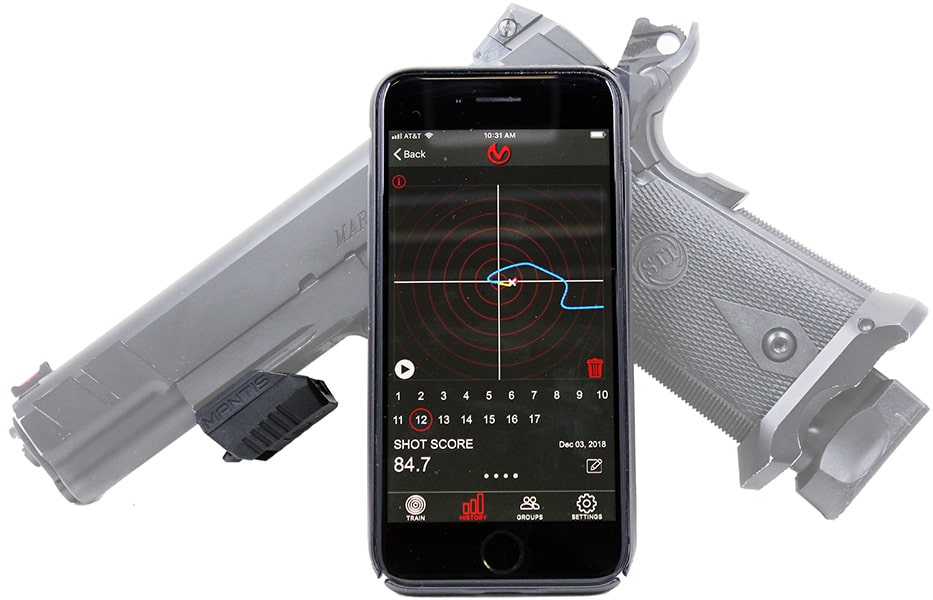
This is an attachment for your pistol's rail that syncs with your phone.
It gives feedback on your draw, trigger press, and more.
If you're stuck on the dry trigger press, this gives excellent feedback.
The Downside
Intermediate shooters (USPSA B Class, IDPA Expert) may find they've mastered most of what MantisX can teach them.
There are benefits, but not as much as for newer shooters.
Needed Gear
Who It's For
New and beginner shooters who are stuck on their trigger press, draw, and transitions.
Smokeless Range
This is the best dry fire software today for civilians.
It has moving targets, video simulations, a home virtual range, and more.
The Downside
It costs $1,000-2,000, and setting up a projector is a pain if you haven't done it before.
Needed Gear
Who It's For
Intermediate shooters (USPSA B class or IDPA Expert) or above, looking for a virtual range to save on ammo.
CoolFire Trainer
This converts your pistol from a live firearm into a recoil-simulating training tool.
It uses CO2 to simulate the recoil, and CO2 cools as it gets spent, hence "CoolFire" instead of "Dryfire".
As you use CoolFire, the temperature in the system drops. This drops the pressure, and the felt recoil.
The workaround is to use a coffee mug warmer to maintain your tank's temperature.
The ideal tank temp is 85ºF. Go lower, and the recoil gets weaker, and you get fewer shots per refill.
Go higher, and your O-rings wear out much faster. To get this temperature on a 20oz paintball tank, set your coffee warmer to 95ºF.
The recoil is around 50-66% of 9mm (depending on your tank temp) and the recoil impulse is a little different.
You must still do live fire every month or so to maintain your full grip technique.
CoolFire will help you take less live ammo to perfect your grip.
It will maintain your grip technique for longer between live fire sessions.
It can train your vision for reading the sights in rapid fire.
It makes multi-round drills much closer to the real thing than pure dry fire.
CoolFire also offers laser attachments for use with virtual range software.
One is a muzzle laser that screws on the barrel.
The other is the Rapid Fill Adapter (RFA).
The RFA makes it much easier to refill, adds around 50 shots of capacity, and has an integrated laser.
In my experience, the Rapid Fill Adapter is outstanding.
It's so much better than the muzzle laser that I wish I had never bought the muzzle laser.
For the laser type, choose the red laser if you don't plan on using Smokeless Range.
Otherwise, the infrared laser adds another degree of realism with Smokeless Range.
The Downside
Your holster must be open-ended, or accommodate a 2-port or larger compensator.
Maintenance:
-
Every 1,000-2,000 rounds, you'll have to replace the striker tip ($2 each).
I recommend buying at least 1 pack of extra striker tips with your purchase, to save on shipping.
-
Every 3,000-5,000 rounds, you'll have to replace the O-rings on your fill tank, Rapid Fill Adapter, etc.
-
Every 3,000-5,000 rounds, you'll have to refill your CO2 tank.
Before you buy, ensure there's a place nearby that does refills for paintball tanks or soda tanks.
For paintball tank refills, look for Dick's Sporting Goods or a paintball shop/field.
For soda tanks, look for a brewing supply store.
Get the appropriate tank and adapter to match your local refill options.
Needed Gear
Who It's For
People who find plain dry fire too boring to do 3-5 days a week.
Hardcore shooters looking to maintain their skills with a reduced ammo budget.
When 9mm was $0.20 a round, this system paid for itself in 3,000 rounds.
Now, with 9mm at $0.35 a round or more, this system pays for itself in ~1,750 rounds.
Advanced Drills
Once you have the basic drills down, you can start adding in movement and more complex setups.
For a full list of drills, their setup instructions, and hints, check out DryFire Reloaded (2017)
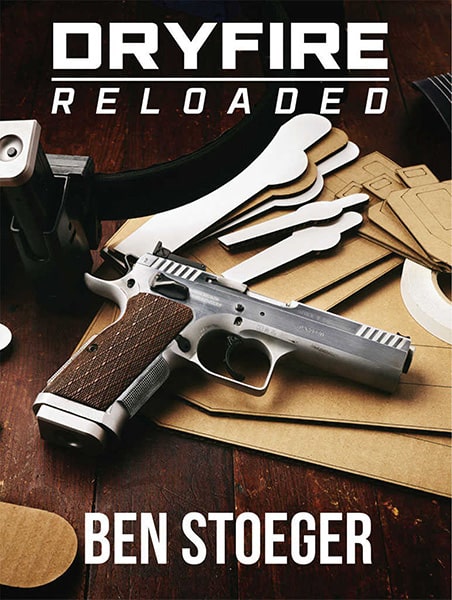
Disclaimer: As an Amazon Associate I earn from qualifying purchases, at no extra cost to you.
Wrapping up
Dry practice is more work than fun.
Still, it's a tool all the top shooters use, and there are products now for expanding what dry fire can do for you.
To level up and maintain your skills, I recommend dry practice at least 15 minutes a day, 3-5 days a week.
Pick 3-5 drills to work on, and do 3-5 sets of 10 in our free dry fire app.
If you can make that part of your morning routine, you'll be warmed-up to use your pistol later in the day.
And if you practice the right way, you'll make serious skill gains, way faster than you would with live fire alone.
Next Steps
Dry practice is best when combined with training to keep you on the right track.
If you want to shoot like an FBI agent or beyond, and you're within 30 minutes of Georgetown, TX, sign up:
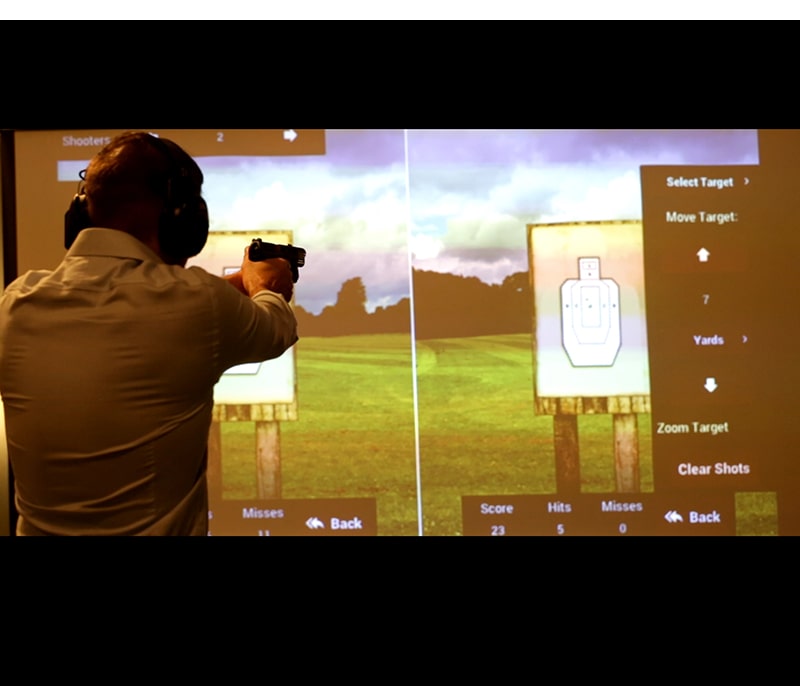
Basic Pistol
Learn safe gun handling and basic pistol skills, so you can have a safe, fun time shooting.
Gain confidence with a pistol in four 1-hour classes.
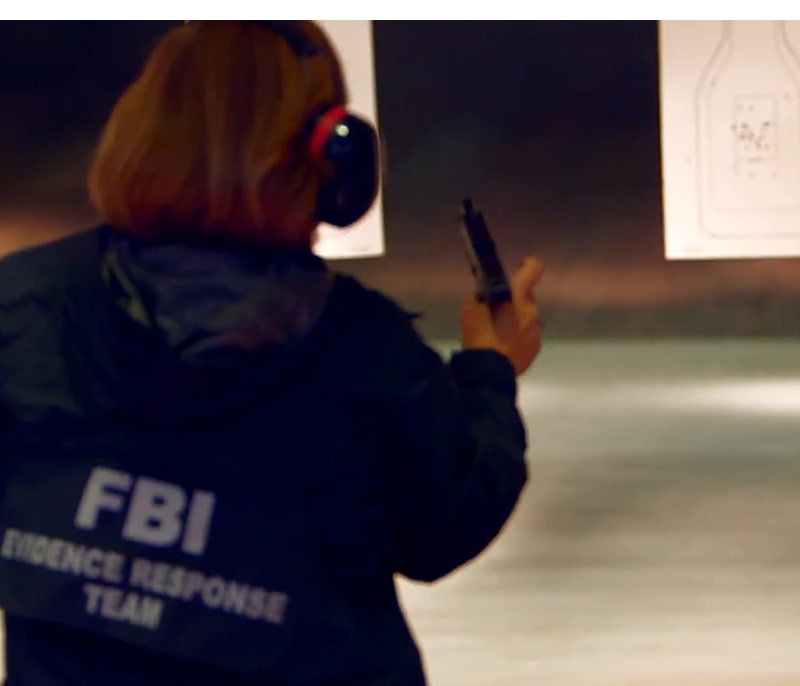
FBI Transformation
The Texas LTC doesn't teach you how to win a gunfight.
Exceed FBI standards and carry every day with confidence in 24 1-hour classes.
References
-
Practical Shooting Fundamentals Omaha (2022)
-
Skills And Drills PMRPC 2022 (2022)
-
Ben Stoeger Practical Shooting Skills and Drills (2021)
-
Ben Stoeger Teaching Speed Shooting Fundamentals (2020)
-
DryFire Reloaded (2017)
Related Articles
Feedback
Are you happy with this page?